VIDEO FEATURE & WEB-EXCLUSIVE INTERVIEW
Musician: CURTIS STIGERS
Music Video: One More for the Road
50 years ago, magic was made on the stage of the Sands Hotel and Casino in Las Vegas, when the timeless cool of Frank Sinatra met the robust swing of the Count Basie Orchestra. Sinatra at the Sands has remained a beloved classic ever since, the perfect marriage of old-school pop and big band jazz.
Singer, songwriter and saxophonist Curtis Stigers has been bringing those worlds together in his own music for the last three decades, which makes him an ideal candidate to reinterpret Ol’ Blue Eyes’ cherished repertoire for modern ears. On One More for the Road, his January 20, 2017 release for Concord Jazz, Stigers captures the rare alchemy of hipness, elegance, playfulness and feeling that made Sinatra’s renditions of these songs immortal, celebrating the 50th anniversary of Sinatra at the Sands with the virtuosic and ebulliently swinging musicians of the Danish Radio Big Band.
“My first goal,” Stigers says, “is to be the best at what I do—to be a great singer, to sing a song with honesty and integrity. If you put the quality of what you do first, you will always be more successful.”
Curtis Stigers talks with us about growing up in Boise, Idaho—playing the clarinet in high school, sitting in with the legendary jazz pianist Gene Harris before he even knew how important Harris was to jazz, working hard to do what he loves, and his strong desire to be really good at making music.
CURTIS STIGERS Web-Exclusive Interview
with M Music & Musicians magazine publisher, Merlin David
How did the album One More for the Road evolve?
Originally, it wasn’t an album at all—it was a concert, a live record. Nine of the tracks are from a concert I did in January 2014, and “Don’t Worry About Me” from a year later because I liked that version. The original concert was in Denmark, with the Danish Radio Big Band. They wanted me to sing a bunch of songs, mostly from the album Sinatra at the Sands—his live record. I flew to Denmark, we rehearsed for a day, got dressed up, drank some Danish beer, and sang a great bunch of songs with a fantastic big band. Most of these songs I’ve listened to so many times—they are in my DNA. They’re mostly from Frank Sinatra’s Capitol era. They were songs I knew, but never sung them with a big band or an orchestra at that point. It turned out great and it was a lot of fun, and then I flew home.
So, how did this recording come about?
About a month later, they sent me the recordings, and I didn’t even listen to it the first couple of days. But when I listened to it, it was good. It was a very high quality recording—for the broadcast all around Denmark. I started sharing it with people. Again, this is almost three years ago. I played it for my manager, and he said, “This is great. We should talk to Concord about this.” He sent it to them, and they were really interested and wanted to release it for Sinatra’s centenary, which was in 2015. But they thought there was going to be a glut of Sinatra records, and decided not to do it. I was okay with that decision because for me, it was a really fun night, and we have some really nice recordings. It wasn’t something I had worked on for a year and a half and written a bunch of songs. So, for me, in my head, it really wasn’t a record yet.
Did Concord Records come back to you?
Concord got back in touch with us halfway through that centenary year saying “We gotta put this out—there haven’t been enough Sinatra records out.” (Laughs) I said, “First of all guys, it’s too late. We missed it.” But it turns out the original Sinatra Sands record was 50 in 2016, so it made sense to revisit it. The strange thing is that I didn’t sit down and say, “I need to make a Sinatra record.” (Laughs) I’ve avoided that. I’ve always railed against the idea of concept or tribute records. I never understood why someone would do that. I feel people should do something else—do their own thing. I’ve always made records that came out of the ether, and there was a particular reason for each song. And then once the recording is finished and I look back at the record, I realize ‘Oh, this really does have a theme.” It’s heartbreak, the end of my marriage, new love or whatever. They always end up having a theme. I’m just never sure what it is. I do it all so instinctively. But this one, it was readymade—for a nod to one of my great heroes. So all those years about being snobby about tribute records—I’m gonna be paid back for it. (Laughs)
Was Sinatra a big influence on you?
Sinatra was a huge influence in my life. Musically, even when I was kid—I would see him on TV in the 70s. He wasn’t necessarily cool, but he was hugely popular. I saw him sing his cornier stuff, “My Way,” “It Was a Very Good Year” or “New York, New York,” and I would think
‘That’s such a cool story.’ That’s the first thing that got me about Sinatra—what a great storyteller he was. When he sang a song, whether it was a swingin’ up-tempo or corny melodramatic pop song—you got drawn in. Every word meant something, and he made those songs his life story. He would take a song by Jule Styne and Sammy Cahn and make it a part of that myth-building—a part of who we know Sinatra to have been—whether he was that or not. He truly had a way of telling—creating a story.
Do you remember your first Sinatra album?
I bought my first Sinatra used vinyl at a local record store—Songs for Only the Lonely. Then the next year the album No One Cares had “I Can’t Get Started”—and I sang that song a lot when I was a kid. Again, it told a great story. I got that no matter how much he wanted her to love him, she wasn’t there. I got that as a maudlin 19 year old kid. And I get it now. That continues to be the thing that influences me about Sinatra. Of course, his voice kills me. I love the texture of his voice—that he could sing incredibly sweetly and quietly, and would let his voice crack occasionally. And then he could sing big and beautiful and loud. And he could swing like the greatest musicians. Besides being a wonderful storyteller, he was a great musician. And that’s why he’s not only known as a pop singer, but he’s known in jazz circles—certainly as a jazz singer.
Tell us about a musical hero you worked with.
I was a huge Elton John fan—bought Goodbye Yellow Brick Road when I was in the third grade. I’m still a huge fan. I was lucky enough to meet him—opened for him many times. It’s not like we hang out (laughs), but I consider him a friend. He’s always been really nice to me. I loved him because he was a great storyteller, a musician—a wonderful piano player, great songwriter, and a flamboyant pop star. That appealed to me as a kid who was interested in pop and rock. I opened for Elton John, Eric Clapton and Bonnie Raitt—at Wembley Stadium in London in front of 88,000 people. That was clearly a “pinch me” moment. All three of them are so important to the way I perform, the way I sing, the way I write. I found myself in Elton John’s big palatial dressing room, and Bonnie walked in. Two of my favorite singers in the world, and there I was in the room with them—like they were my contemporaries. Obviously, I was just a kid who was just drooling, but I knew at that moment—this is something special.
You worked with Bonnie Raitt too?
Last summer, Bonnie was in Boise, and I got to hang out with her, sing and play sax for her on stage—here in my hometown. That was a full circle. I was only seriously in the pop realm for about 8 or 9 years, and really only had a lot of success for just a couple of years. But during that time, I got to have some big fun. The people I met and the places I got to go—the TV shows I was on—it was fantastic. Strangely, it didn’t really fit who I am, as a person. I mean, I wash the dishes, run the laundry, drop my daughter at school. I’m kind of a normal dad—except that I sing for a living. This part of my career fits me better as a person. I play smaller places, and I meet the people I play for. It just makes more sense to me. But those were fun days.
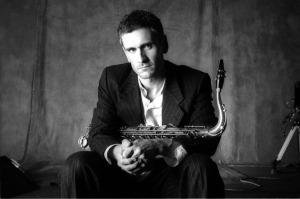
Photo Credit: Norman Seeff
Top 5 Musicians or Songwriters who inspired you to become a musician?
Elton John—great songwriter and a flamboyant pop star. Stevie Wonder—was really big in my early years. As far as jazz singers, Sarah Vaughan and Mark Murphy—appealed to me in high school. I sang in a jazz choir at school—in Boise, Idaho. There was this circuit of high schools and little colleges that had jazz choirs—Manhattan Transfer times four. (Laughs) I actually went to college on a jazz scholarship—singing in a jazz choir and playing in a jazz band. I only went there for one year. I got thrown out. (Laughs) I thought I knew more than I actually did. It was a little college in Pasco, Washington, but it had a great jazz professor—Dave Barduhn—who had arranged for Stan Kenton big band. He has since become a good friend, and has hired me for gigs over the years. Actually, he’s done some arrangements of my songs that jazz choirs around the Northwest do. It’s pretty funny how it’s come full circle. At 51, I am now those charts that I used to read. (Laughs) I really got into jazz singers then—in late high school, in my late teens. Mark Murphy, not only became a hero of mine but also became a friend and a mentor of mine—which was lovely. He was so kind to me, and really took care of me. When I moved to New York, he introduced me to a lot of really cool people, and got me going in some interesting directions. Also, Ray Charles was a huge influence. B.B. King—just phrasing-wise. When it comes to blues singers, BB and Joe Williams. I could go on and on.
How does where you grow up (Boise, ID), where you live or travel influence your music?
As a kid, music in the schools was fantastic. The music education program in Boise, surprisingly enough, was just great—great band director, great choir director. I was a drum major, and the lead tenor in the big band. I got a lot of education for free—just by going to school every day. Also, Gene Harris, a legendary jazz pianist in the 50s, 60s and 70s—retired to Boise, Idaho, in the late 70s. He retired from the road and from recording for a while, but he had a gig playing five nights a week in the lobby bar of the Idanha Hotel. It was just something for him to do. He played for free. His wife sat at the first table. They made it their living room—one of the greatest pianists in the world, playing in Boise—for free, every night.
Did you ever play with Gene Harris?
Tuesday was open jam session—anybody could come in and play. At that time, I didn’t fully realize who Gene Harris was until I later moved to New York when I was 21 and I went to see him play with Ray Brown at the Blue Note. Only then I realized, “Wow! I’ve been playing with a legend all these years.” (Laughs) A few years after that, when I got my record deal and had my success with a few hits—Gene asked me to sing on his records. So it came full circle when I got a chance to sing on a few of his records before he passed away. That was a big deal—to get to learn jazz music—playing with someone who helped to create that music. That was huge.
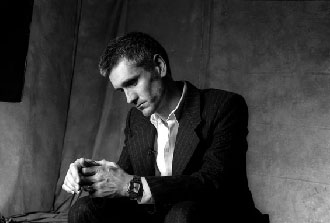
Photo Credit: Norman Seeff
Sax is your main instrument, but I believe you also play guitar and clarinet.
Yeah. I grew up playing the clarinet. The saxophone took over as the instrument of choice. I also played drums in rock bands. I’m an average singer-songwriter on guitar, but my main instrument is the saxophone. I learned a lot from records. I wanted to play the music I heard on records—whether it was jazz, punk rock, blues, soul, pop. I wanted to learn it all. It never occurred to me that I was just one guy. I’m still waiting to figure out which guy I actually am. Since my hit “I Wonder Why” came out, I’ve always been known as the singer who plays saxophone. That’s fine. I do, and I like to play sax. In my own concerts, I tend to play sax on a blues or a ballad. I play where it is best suited. Otherwise, I’m a singer—that’s my thing. My voice is my main instrument.
How did you start with the clarinet?
I was a clarinet player because my cousin Diane had graduated from high school, and I inherited her clarinet when I was old enough to be in the school band. I became a horn player, a woodwind player, because of cousin Diane. (Laughs) I realized at a certain point if I wanted to play music other than classical music—or a little more jazz—then saxophone was more the direction. I picked up the sax, and that became my thing. I never really became the saxophone player I hoped to be. I’d love to be Hank Mobley or Michael Brecker. I always say I’m a singer who owns a saxophone. (Laughs) But I can sit in with a blues band or soul band and hold my own, no problem. I like to play sax, but if a real sax player comes—I set it down. When a great jazz saxophonist walks in, I usually put my horn down and start singing.
How did you start playing in the school band?
It’s funny where you get your inspiration. The thing that really made me want to play in a school band—when a friend’s parents took me to see the Army Band or maybe the Marine Band. They were playing drums, horns and saxophones. I thought, ‘I want to do that. I want one of those instruments—I don’t care what it is.’ (Laughs) It was a military band of all things, but it got me going. You just never know where you will get the inspiration.
What equipment can you not live without?
Vandoren has always been incredibly generous with me. I played on Vandoren reeds for years and years. I just started playing with a new Vandoren mouth piece. I’m playing exclusively on a new V16 metal mouthpiece. I just love it. I’ve always had a hard time finding good mouthpieces that work for me, and when I tried this I thought, ‘Oh, this was made for me—perfect.’ They’re great. I like them. They’ve been very, very kind to me.
Who inspired you to write songs?
Elton John, because he was a songwriter, was a huge influence on me as a musician. Goodbye Yellow Brick Road was the first album I ever bought—in the 3rd Grade. From that point on, I was drawn to singers who also wrote their own songs. Eventually, I kind of had to let go of that because there are so many great singers, like Frank Sinatra, who never wrote songs. When I started making jazz records, I allowed myself to let go of just being a singer who sang his own songs. I love singing other people’s songs, and I’ve always done it. Now, I’m able to record an album with maybe none of my own songs, and I’m fine with it. My most autobiographical album which came out about five years ago, Let’s Go Out Tonight, doesn’t have even one original song on it. I didn’t write one song, but every single one of those songs is about me. (Laughs) I love finding other people’s songs. I love singer-songwriters like Elton, Neil Young, Joni Mitchell, Donald Fagen from Steely Dan—one of the greatest songwriters ever. His Nightfly is so good. Every word, you go ‘how did you do that?’ It’s like a novel. It’s every bit as good as The Catcher in the Rye or The Great Gatsby. I think it’s brilliant. After we talk, I’m going to put that album on because I haven’t listened to it in a while.
Tell us about working with amazing songwriters like Glen Ballard, Carole King, Barry Mann and Shelly Peiken.
Yeah, I’ve been very lucky to work with these amazing talents. I write as much as I can, but it’s the hardest thing for me. I always say that I love starting a song, and I love finishing a song. The rest of it is agony. (Laughs) In order for me to write a song that I’m really proud of and I really love—I have to spend a lot of time editing, re-editing and agonizing over it. Most great songwriters I know don’t take that kind of time. They sit down and write something and it seems like it’s instantly brilliant. There are always exceptions. Sometimes a song might take someone longer. It’s hard for me. It’s a lot of work. Once I finish a song, and I know it’s a good song, I love it. It’s so fulfilling to write a song I’m proud of. But it can be like pulling teeth. (Laughs)
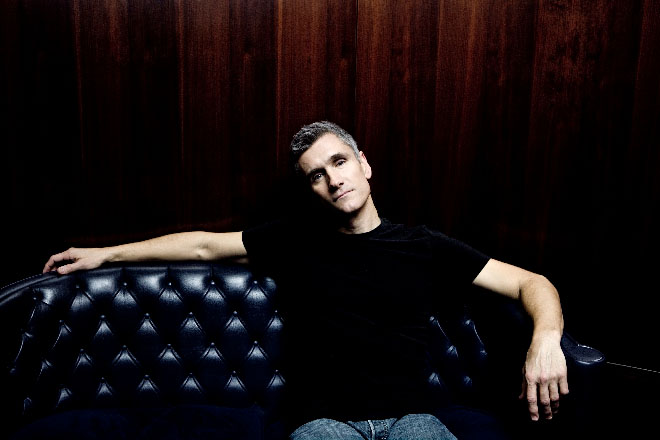
Photo Credit: Mali Lazell
How often do you write songs?
I write when I can. I usually need a deadline. I write a song when I gotta have a song. More than once, I have finished a lyric to a song—while they’re mixing. (Laughs) I finish the song outside the studio and run in and record the vocal for the final mix. And some of those have been my favorite songs like “Lullaby on the Hudson” that I wrote for the album I Think It’s Going to Rain Today. It was about 10 years ago. I wrote it about my daughter. It was all in my head but not on paper. I was sitting on the steps outside Monica Mancini’s house. At that time, that’s where the mixing room of Concord Records was located. I was outside the Concord Studios, looking out over the valley in LA, and I was writing these lyrics. And I could just hear them inside the studio getting all the levels in place, and I said to myself, ‘This song is obviously done because he’s ready for me to sing it.’ (Laughs) I tend to be the great procrastinator but sometimes it works.
What PRO are you with, and how have they helped a musician like you?
I’ve always been an ASCAP guy. They got me with “Irving Berlin started this organization.” I thought, ‘OK, that’s the organization I want to be in.’ I’ve always liked the folks at ASCAP. They’ve always treated me very well. I co-wrote and sang the theme song to the TV series Sons of Anarchy. The other writers and I have won an ASCAP Award. I go to those Awards just to check in with them. Aside from getting the checks and collecting all that wonderful money that I’m owed, ASCAP has always felt like a family. I like being a part of an organization like that—in your business but outside that main record business thing. They’re cool. I like them.
With whom did you co-write that Anarchy theme?
Dave Kushner and Bob Thiel Jr.—Bob and I have been friends since the early 90s. We’ve been writing songs, and he actually produced one of my records back in 1999. He called me one day about eight months before the show premiered. He said, I got a new job. I’m the music supervisor on this new TV show, and it’s about murderous gun-running bikers—write the lyric. (Laughs) I wrote the lyric, recorded the demo and sent it back, and that demo was the soundtrack. Bob Theil Jr. is a very talented guy who continues to do soundtrack work and write songs. I never got to meet Bob’s father, who produced all those Coltrane records, Buddy Holly, and so much more.
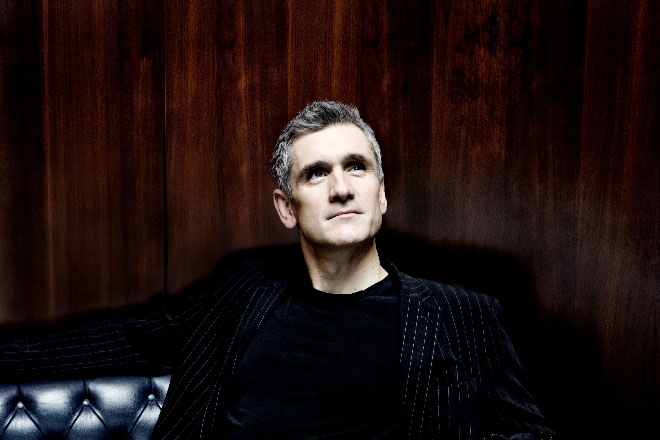
Photo Credit: Mali Lazell
Where were you when you first heard your song on the radio?
It must have been over 25 years ago. I was on the road trying to get radio stations to play “I Wonder Why.” I was in a car just outside Lancaster, PA, Amish country, and I had just dropped it at the radio station and chatted with the program director. They were nice but kept me at arm’s length because they don’t know if they’re going to play your song. I got back in the car and we were driving down the road and crossing the river, and Johnny the radio DJ said, “And now here’s a new one from a new artist we just met—Curtis Stigers.” And then they played “I Wonder Why”—and my head almost exploded. It was so fantastic—just beautiful.
Do you still remember those firsts?
Yes. I remember the first time I heard Casey Kasem announce my song. (Imitates Kasem) “And now, here’s Curtis Stigers.” I listened to American Top 40 my whole childhood, and now here he was—saying my name. It was extraordinary. I was sitting at home, and I remember his voice saying my name. I longed for it—that, and the idea of sitting on The Tonight Show couch. I watched it every night—my whole childhood. From the time I was five or six years old, watching it with my grandmother—playing cards at her table while she drank coffee late at night. She was a fun grandma. I used to imagine what I’d say to Johnny Carson. I was on about five times with Jay Leno, but never Carson. But I am so happy I was on that show. To this day, sitting on that couch next to that desk—it’s still pretty amazing.
Best advice someone has given you.
Gene Harris, the legendary jazz pianist, when I was probably 19. He heard me sing for the first time. Usually I’d go in and play horn with this group, “The Young Jazz Lions.” We’d play with Gene, but that night he said, “You guys go up and play a song.” We played, and I sang something like “Stolen Moments.” During the next break Gene said, “You know, you’ve been coming here and playing horn for several years now, and you’re a good horn player. But, I think this singing thing—this is where you belong.” And that was damn good advice. I took him up on that, and it worked—it really did.
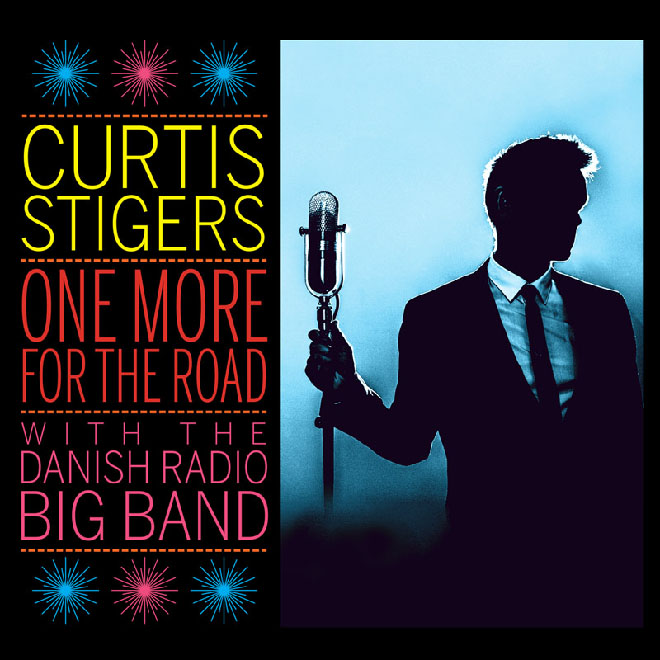
Best advice you’d like to give this next generation of musicians.
The thing I see in young musicians or young singers—is the desire to be famous, as opposed to having a desire to be really good at what you do. That’s what I’ve always strived for. I work hard. I get up early in the morning to do interviews. I definitely work hard to sell tickets and sell records. But my first goal is to be the best at what I do—to be a great singer, to sing a song with honesty and integrity. If you put the quality of what you do first, you will always be more successful.
What’s next?
I’m always getting ready for the next trip to Europe for tours and things. January was another trip to Denmark with the Danish Radio Big Band to celebrate this record. I also have another trip to play with the SWR Big Band. Doing a lot of big band stuff now because of this record, and I’m very happy about it—it’s a lot of fun. I’m playing in New York in May, and other similar dates.
When’s your next record?
I will put a record out—maybe next year. I’m not worrying about what my next record will be because of this live record, and I have an almost 17 year old daughter I really like spending time with. She’s off to college in another year and a half, so I’m making the most of being a dad now because she’s going to be gone. I’m spending a little less time on the road. I just did a song with Vince Giordano and the Nighthawks. My drummer is a drummer with Vince, and I was in New York a month ago and sat in with them and had a ball. I started thinking, ‘Hmm, maybe that’s the next record’—maybe dip into the 1920s and 30s. That could be one of several albums in my head. Vince plays bass sax—he’s so good. The guy is such a talent. He plays the big aluminum bass, invented in the teens, I think. And he plays bass sax, tuba and banjo. It just sounds like it would be fun to record with him.
Where can your new fans get more info and stay updated?
CurtisStigers.com
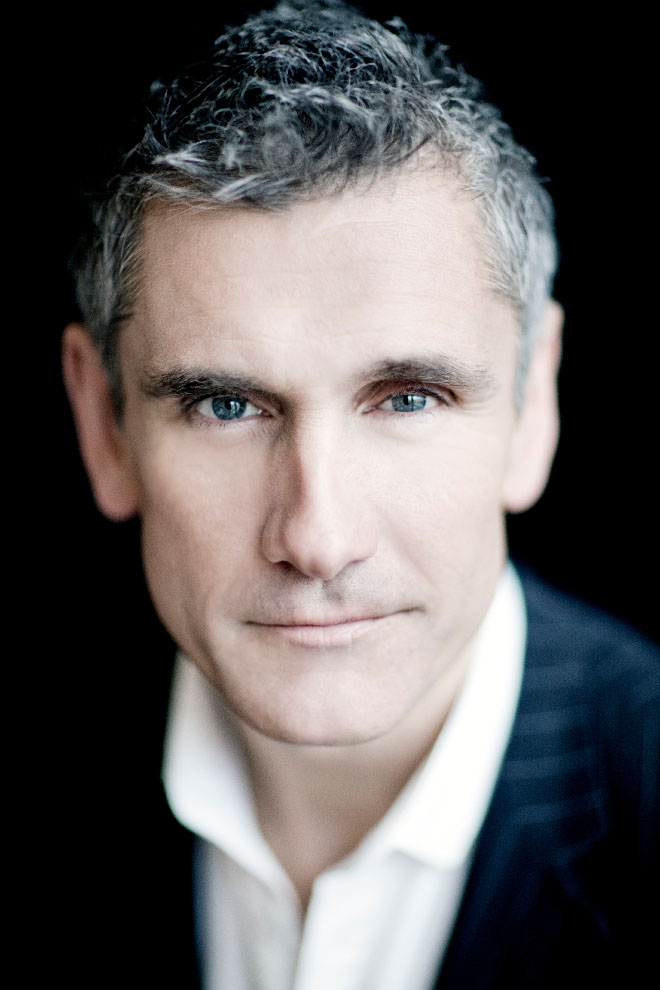
Photo Credit: Mali Lazell




comment closed